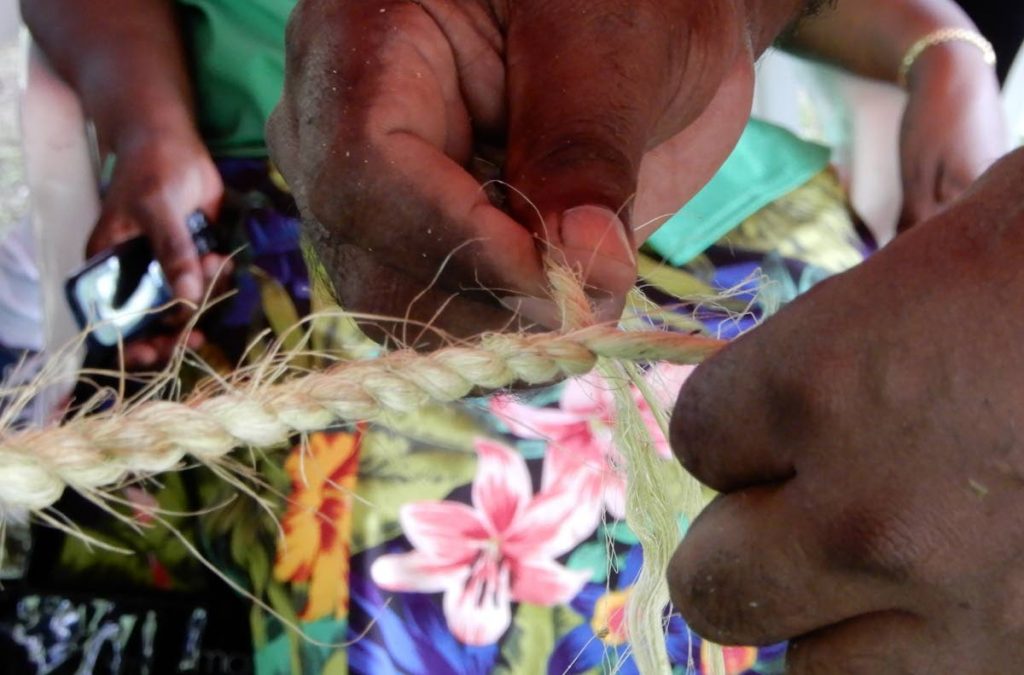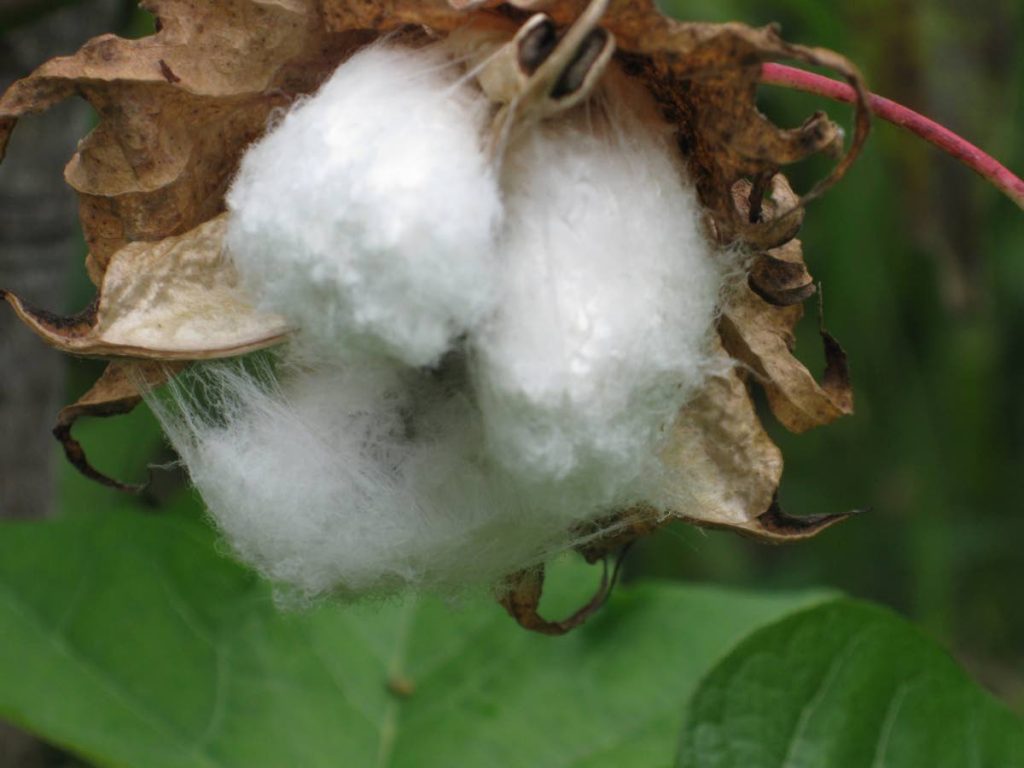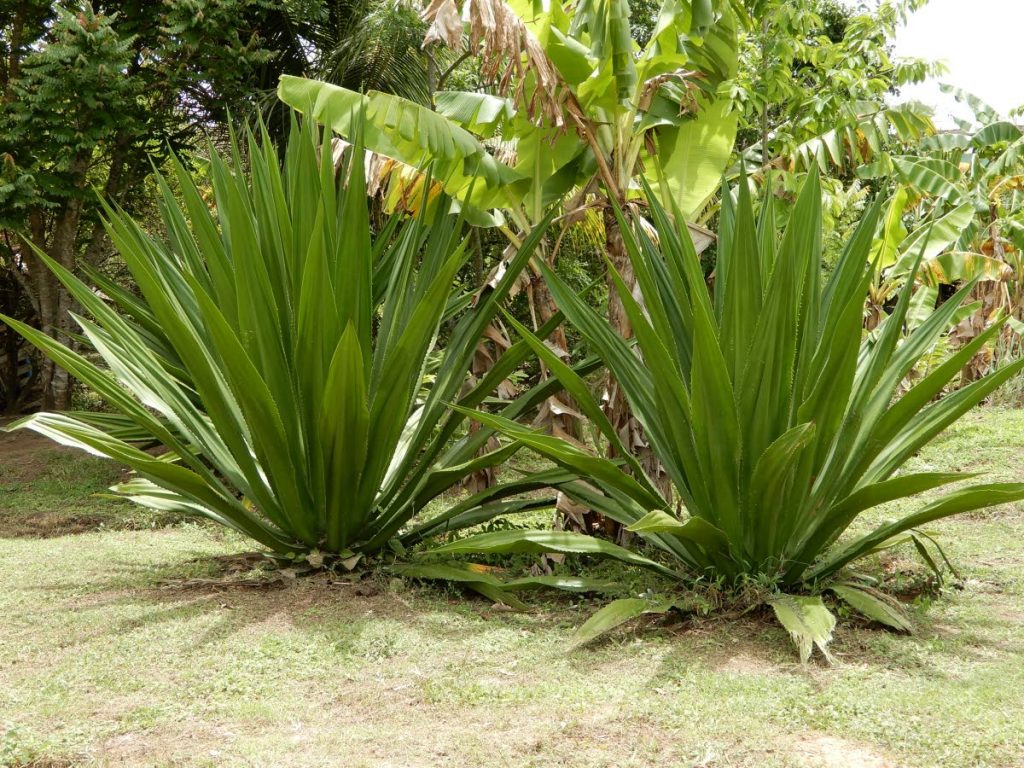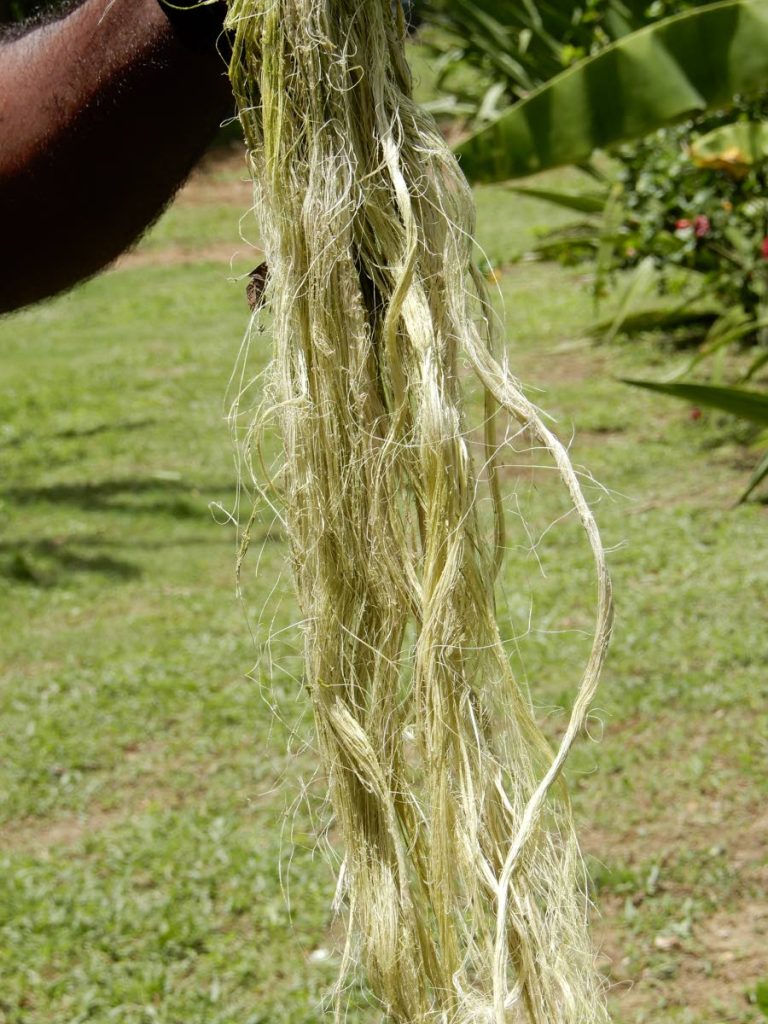Let’s take a second look at plant fibres

Elizabeth Chin
We have all been taught from our earliest days that plants are essential for our survival; they produce the oxygen we breathe, they provide us with all manner of foodstuffs, materials for our clothing and houses that we build, medicines, fuel and very importantly regulate the Earth’s climate.
We will take a second look here at some familiar plants, their plant fibres and uses for them. Plant fibres are single cells, usually part of the supporting tissue and composed of cellulose and sometimes lignin as well. Plant fibres may come from any part of the plant; the seed, stem, leaf or fruit.
In Trinidad, the cotton plant (Gossypium hirsutum) which is native to Mexico, Central America and the Caribbean, grows wild along the roadsides and highways and sometimes may be spotted in someone’s garden. The white fluff or lint is attached to the seed and in times past it was used as we now use cotton wool or cotton balls. The American commercial varieties, Upland cotton and Pima cotton have been bred from this species. The long-stapled cotton, (Gossypium barbadense), which is native to south America, is cultivated in Barbados, ginned to remove the seeds and then shipped to Italy, Switzerland and Japan where it is spun and woven into fine cloth.

When next you buy a doormat look at the stiff brown fibres. This is coir, a fibre from the mature fruit of the coconut palm. It is also used in brushes and mattresses. White fibre may be harvested from the green nuts and is used for making finer brushes, string, rope and fishing nets. The fibre is separated from the shell by dehusking, formerly a manual process by which the fruit is driven down onto a spike to separate the fibres. This is now done mechanically.
The coconut industry in Trinidad was at its height in the 1930s but has declined since then due to many factors including pests (red palm mite) and diseases.
At Christmas time we look forward to our favourite sorrel drinks, both non-alcoholic and alcoholic, jams, jellies and chutneys but who would have thought that it is also a fibre plant. Sorrel, (Hibiscus sabdariffa), yields a stem or bast fibre. The fibre is similar in appearance to jute and can be used as a jute substitute for sacks and hessian. It is cultivated mainly in Java and Bangladesh.
Ochro (Abelmoschus esculentus) is another vegetable often grown in our gardens that we do not usually think of as a fibre producing plant. The fibre is extracted from the stems by retting. That is, by soaking in water for some weeks until the soft material has disintegrated then the fibres are rinsed and dried. They may also be retted by chemical means. Ochro fibres are used in industry as reinforcement of the polymer composite Araldite resin. Other natural fibres such as wood, sisal, hemp and coconut serve the same purpose. The advantage of using natural fibres over synthetics such as glass is that they are light weight, cheap and biodegradable. These fibre reinforced composites are used to manufacture automobile parts, car doors and furniture.
We usually associate the word hemp with marijuana (Cannabis sativa.) Industrial hemp is a variety of C. sativa but doesn’t contain such high quantities of the psychoactive drug. The hemp grown for fibre is planted closely resulting in tall slender plants and the fibre is extracted from the rigid woody stem by retting as for ochro fibres. The use of hemp dates to the Stone Age in China over 10,000 years ago. From 1776 to 1937 hemp was a major crop used for textiles in the United States before the war on drugs. The hemp fibre industry was reborn in the 1980s with the main uses being for rope, sacking, carpets, clothes and paper.
The agave plant (Agave sisalana) originates from South America where it has many traditional uses. It was introduced to East Africa where commercial plantations were established in the early 1900s and which are now rivalled by Brazil. It flowers only once in a lifetime, every seven to 12 years.
The fibre is extracted from the leaf by a process known as decortication, that is, the leaves are crushed and beaten and brushed with a rotating wheel until only the fibers remain.
The agave plant has been made famous in Trinidad by Ronald Alfred of Balmain, Couva. Here Alfred and his family keep up the tradition of the Original Jab Jab Carnival band and make their own whips from the agave plants they grow on the compound. When the leaves of these plants begin to go yellow, they are harvested, the spines on the edges of the leaves trimmed off and the main part beaten on a hard surface. Then the soft pulp is washed off and the fibres rinsed and dried. They can now be twisted together to make the rope or “lash”.

Pineapple, (Ananas comosus) fibre is also obtained from the leaves. In the Philippines a non-fruiting variety is grown solely for its fibre. The best quality fibre is extracted by the traditional hand method of by scraping the leaves using a knife and a piece of porcelain. It is hand woven into a sheer fabric known as “barong tagalog” for the traditional formal shirt for men.
Abaca, (Musa textilis) is a relative of our eating bananas and produced mainly in the Philippines and Ecuador. The fibres are prepared from the stem or trunk of the plant. The trunk is made up of the leaf stems or petioles wrapped around each other giving support to the upper part of the plant. After fruiting the top and roots are removed, and the stem cut into convenient lengths. Each layer of stem is peeled off and a knife used to scrape both surfaces. When the fleshy part is removed, it is washed in soapy water and dried. It is one of the strongest natural fibres and is used for paper and handicrafts. It is also flexible and resistant to salt water so used in ship’s lines and fishing nets.

One of our favourite house plants, mother in law tongue, (Sansevieria trifasciata), is processed similarly to the pineapple leaf. The leaves are cut from the bottom and left for a few days to dry. The edges are removed, and the leaf scraped on both surfaces with a blunt knife. After washing thoroughly in soapy water with a little bleach, the fibre is rinsed and dried. The fibre may also be extracted by retting. The fibre is used for high quality paper sacks, ropes, handicrafts and is also suitable for clothing.
We have only scratched the surface here. These are only a few of the fibre producing plants to be found locally and worldwide. Keep your eyes open for more.
For further information contact the Eastern Horticultural Club at 357-5033, or 720-2698 or easternhorticultural@hotmail.com. The club usually meets on the first Saturday of every month (except public holidays) at Aramalaya Presbyterian Church, Tunapuna. However, due to the covid19 pandemic meetings have been suspended until further notice.

Comments
"Let’s take a second look at plant fibres"